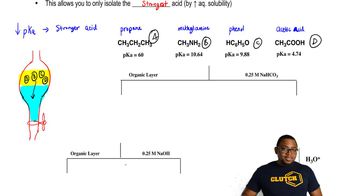Here are the essential concepts you must grasp in order to answer the question correctly.
Ideal Gas Law
The Ideal Gas Law is a fundamental equation in chemistry that relates the pressure, volume, temperature, and number of moles of an ideal gas. It is expressed as PV = nRT, where P is pressure, V is volume, n is the number of moles, R is the ideal gas constant, and T is temperature in Kelvin. This law helps predict the behavior of gases under various conditions, particularly at low pressures and high temperatures.
Recommended video:
Conditions for Ideal Gas Behavior
Gases behave most ideally under conditions of low pressure and high temperature. At low pressures, gas molecules are far apart, reducing intermolecular forces, while high temperatures provide sufficient kinetic energy to overcome these forces. In the atmosphere, regions with lower pressure and higher temperatures, such as the upper troposphere, are where gases are expected to behave more ideally.
Recommended video:
Atmospheric Layers
The atmosphere is divided into several layers, each characterized by different temperature and pressure conditions. The troposphere, stratosphere, mesosphere, and thermosphere have varying altitudes and properties. In the upper layers, particularly the stratosphere, the pressure is lower, which contributes to more ideal gas behavior compared to the denser, lower layers of the atmosphere.
Recommended video:




